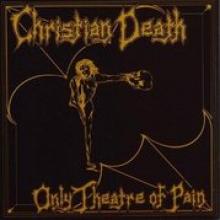Forming in 1979 after a few other attempts to start bands, Williams and his cohort, which at the time counted former Adolescents guitarist Rikk Agnew, went in on a single and eventually a full length album, both released by 1982.
The first batch of songs, which can basically be figured as demo since some wound up on the full length, got sussed out during a time when Jill Emery was playing bass. And while that name isn’t going to register for too many folks, Emery would go on to perform on Hole’s first album as well as being a part of Mazzy Star.
Hole’s first album, Pretty on the Inside (1991), might not be the best landmark to reference while trying to define Christian Deaths influence. But the proclivity for noise on that disc is easily heard on 1982’s Theater of Pain. The credit for that, though, needs to be given to Agnew, who was at once capable of making sounds that might not count as chords while still being able to express a somehow sensible melody.
As the disc begins with “Cavity (First Communion),” Agnew is basically engaged with his own echo as he drives a few chords into the ground, repeating ethereal breaths of guitar. Forming the base for Williams to drool out some lyrics, the rhythm section finds itself allowed to move from fast to slow and back again all while Agnew spits out his down-strokes.
But why does Williams sound like a recent evacuee from London?
Well, seeing as the entire punk underground was at this point concerned with dressing the part, it should be easily figured that any offshoot from the genre would conceive of itself in the same way. If there’s a music, then there surely must be an visual aesthetic that goes along with it. But since it’s all clearly a contrived circus, why not toss in some affected vocals. And as Williams spins out the blood for what seems like twenty minutes, the fact that it’s all a ghoulish hoax winds up being alright. The dancey stuff that follows is more confusing.
